Unsure about your French table manners? Click Here to download > > How to avoid these 10 food etiquette mistakes !
- Home ›
- Destinations ›
- France Less Visited ›
- Chartres Cathedral
The Chartres Cathedral Labyrinth (And Other Fascinating Wonders)
Published 20 July 2022 by Leyla Alyanak — Parisian by birth, Lyonnaise by adoption, historian by passion
Step inside Chartres Cathedral to discover its famous labyrinth, stunning stained glass, sacred relics, vast crypt, and the dramatic roles it played during the coronation of Henri IV and the French Revolution.
I'll never forget my first sight of Chartres Cathedral, waking up in the hotel across the street to see its silhouette slowly emerge from the night. I couldn't climb up to it fast enough.
You don't have to be religious, love cathedrals or admire Gothic architecture to know this one is special, a 13th-century time capsule classified as a UNESCO World Heritage Site.
As a repository of holy relics, the Cathedral has attracted pilgrims and believers for over 1000 years.
There's the labyrinth, of course, a winding path that invites visitors to follow it into a medieval form of meditation, but that's just the tip of the iceberg, and there is so much more to discover.
 The view of the cathedral from my hotel window - the hotel is a bit further in the distance but getting a close-up like this is easy ©OffbeatFrance
The view of the cathedral from my hotel window - the hotel is a bit further in the distance but getting a close-up like this is easy ©OffbeatFrance9 Fascinating Wonders of Chartres Cathedral
1. The labyrinth at Chartres Cathedral
2. The stained glass: 176 windows
3. The cathedral has hardly changed in 800 years
4. The new Gothic architecture
5. The light show: Chartres en lumières
6. Henri IV was consecrated at Chartres
NOTE: Pages on this site may contain affiliate links, which support this site. See full Privacy Policy here.
Whether you’re a lover of stained glass or simply like to stand in places that radiate centuries of human experience, you may well fall in love with this building.
Here are 9 extraordinary things that make the Cathédrale Notre-Dame de Chartres so special.
1. The Chartres labyrinth
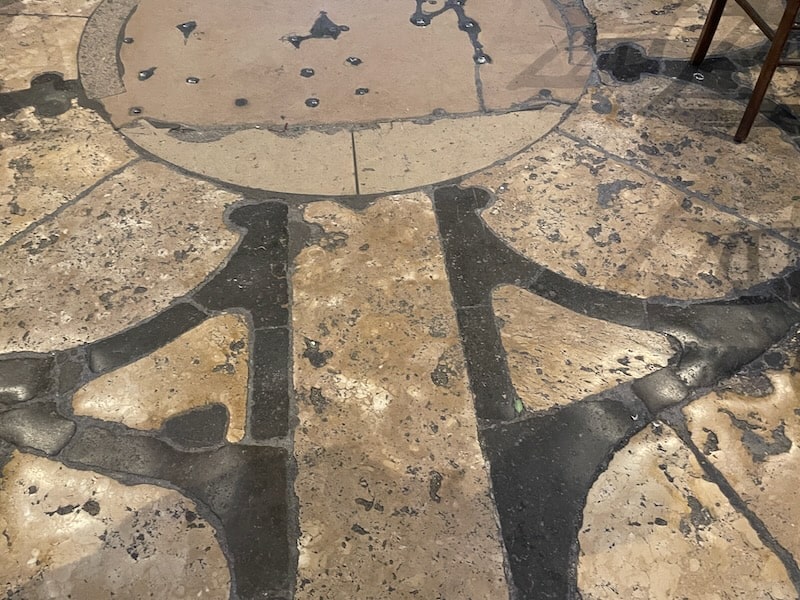 The path leading to the labyrinth's central rosette ©OffbeatFrance
The path leading to the labyrinth's central rosette ©OffbeatFranceMost visitors come to Chartres Cathedral for its stained glass or soaring architecture (and more about those in a moment) but deep in the nave lies something possibly more fascinating: one of the world's most famous labyrinths.
It was carved into the stone floor around the year 1200, possibly as a symbolic substitute for pilgrims who couldn't travel to Jerusalem: unable to undertake a physical journey, they would undertake a spiritual one, following the stone path on the floor, meditating or praying along the way.
The labyrinth walk measures nearly 13 meters across (just over 40 feet) and follows a single, winding path through eleven concentric circles toward a central rosette.
It's often called the Chartres Cathedral maze but it isn't a maze: everyone follows the same path – there are no forks or wrong turns, just continuous inward spiral. If you walk it all the way, you've covered about 260 meters, or roughly a quarter of a mile, all in one place.
When I visited the Cathedral, I almost missed it!
It's only when I noticed people carefully threading their way among the chairs that I realized what was underneath, because no, the labyrinth isn't always visible. During the week, it is covered by chairs, almost hidden from sight. These are (usually, but not always) removed on Friday evenings during the summer, welcoming those who want to walk along it, just as pilgrims did in the 13th century.
2. The stained glass: 176 windows, still glowing
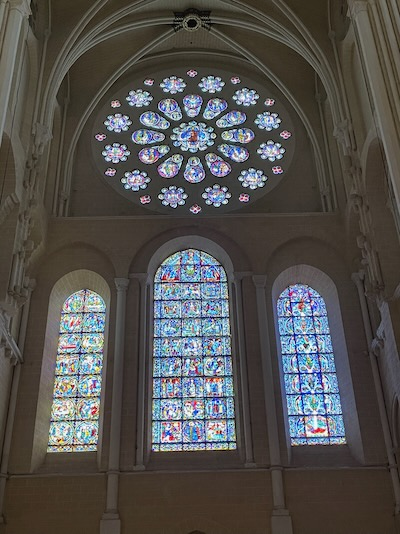
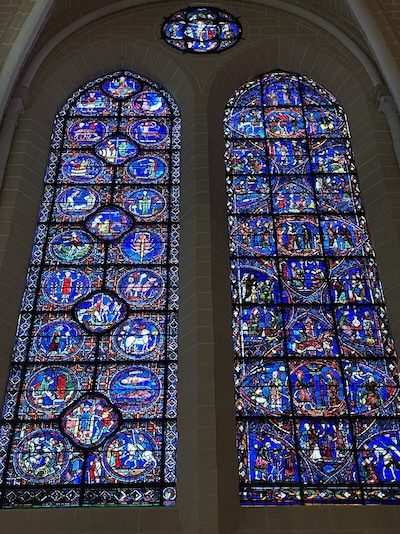
Even more famous than the medieval labyrinth are the Cathedral's 176 stained glass windows, the most complete medieval stained glass collection in the world, to which my photos don't begin to do justice.
You'll be bathed in colored light the moment you step inside, and as you gaze up, you'll try to decipher the meaning of each of the panels, not an easy task.
The most famous is the West Rose window, dedicated to the Virgin Mary, but each window tells its own story, often involving saints and tradesmen going about their everyday work.
Not only are the windows beautiful in themselves but they are also a wonder of survival, having made it through fires and revolutions and wars. Some 80% of the original glass has survived the centuries.
If stained glass is what you came here for, just behind the Cathedral you'll find the Centre International du Vitrail (International Stained Glass Center,) where you can learn how these windows were made and restored, often using medieval methods, and view replicas of the Cathedral's windows close up. (Inside the Cathedral, some of the windows are so high up it's difficult to observe the detail, so the replicas give us that chance.)
3. The cathedral has hardly changed in 800 years
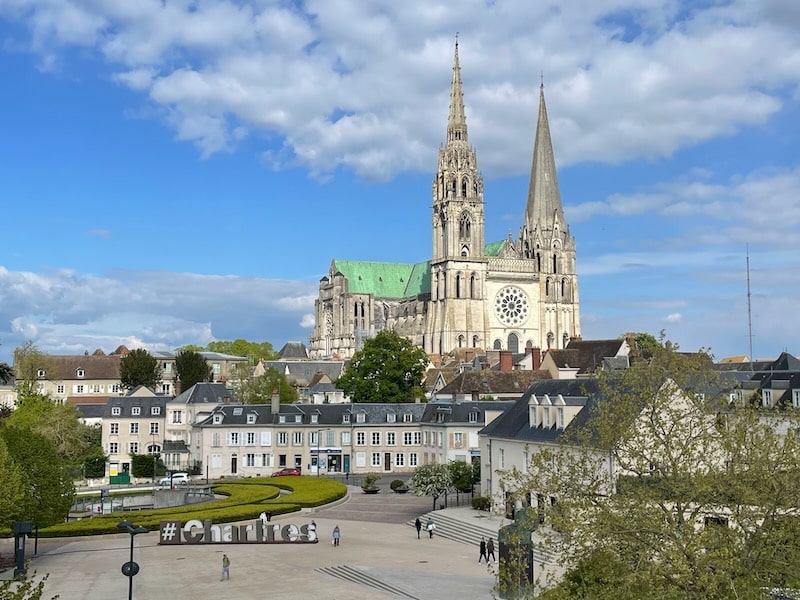
What makes Chartres Cathedral truly remarkable is how little it has changed since it was completed in the early 1200s.
Unlike many European cathedrals, which were modified or rebuilt over time, Chartres retains nearly all of its original layout, sculptures, and yes, its stained glass.
Yet the Cathedral caught on fire at least five times, and had to be rebuilt, at least in part. An earlier Romanesque church that stood in its place was destroyed in the great fire of 1194, but the Cathedral was then rebuilt into what it is today.
When you step through the doors, you’re entering the same space pilgrims walked into 800 years ago. Look around you and you'll see the same stained glass windows and soaring ceilings a visitor would have seen back then. Today, it is still in regular use as a parish church, a basilica and remains a major pilgrimage site for Roman Catholics, although it has lost a bit of its shine since the French Revolution tried to do away with religion.
4. The new Gothic architecture
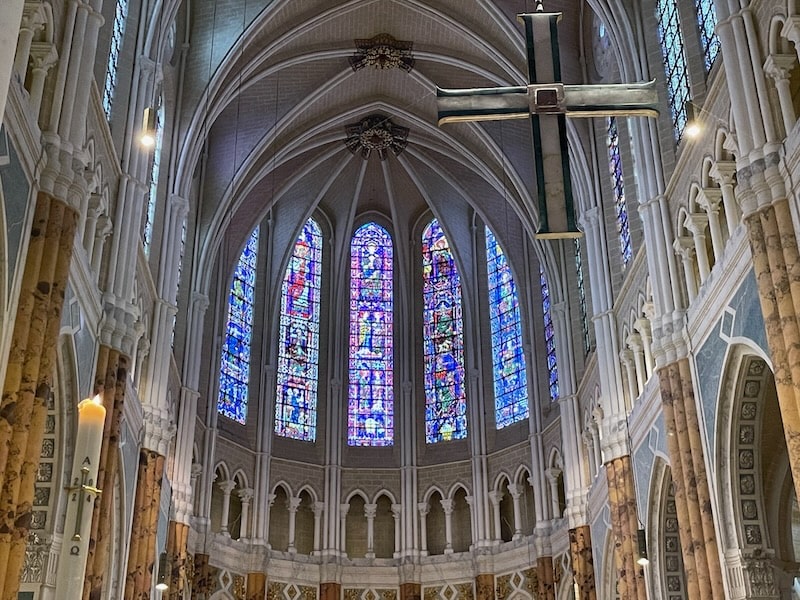
Chartres isn’t just famous for its size or beauty: it's a masterclass in Gothic engineering.
The techniques used when it was built were revolutionary, often designed to let in and propagate the light. The entire structure was planned using sacred geometry and astronomical alignments, based on the golden ratio (I've linked to an explanation for those mathematically inclined among you).
This ratio creates harmony and balance, and is the same technique used to build the Acropolis in Athens and Sénanque Abbey (well known for its lavender fields) in Provence.
What also sets Chartres Cathedral apart is the speed with which it was built, almost all at once, over a few years, after the fire of 1194. Usually, Gothic cathedrals evolve piecemeal, with additions and changes over time.
The post-fire rebuilding was part of a major campaign not just by officials but by thousands of people who came from across France to donate money and labor to the reconstruction – a cathedral truly "built by the people".
5. The light show: Chartres en lumières
From April to October, as night falls, the cathedral bursts into light - on the outside.
During the Chartres en Lumières festival, the Cathedral's façade is lit up so that the outside competes with the inside, or at least, with the inside as it once was. Today, the walls and ceilings are gray, their original colors eroded, but back when it was built, the sculptures and walls were bright with color.
The festival goes far beyond the Cathedral, with 20 or more buildings across town joining in with music and active illuminations. But the truly dazzling show is at the Cathedral, as you can see in my shots below.
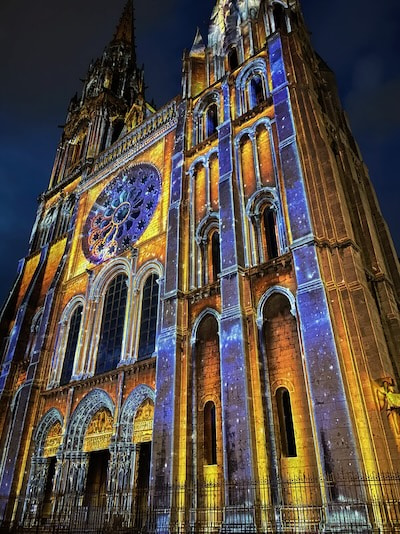 |
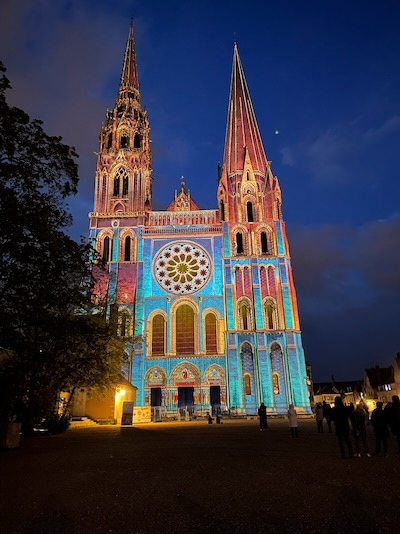 |
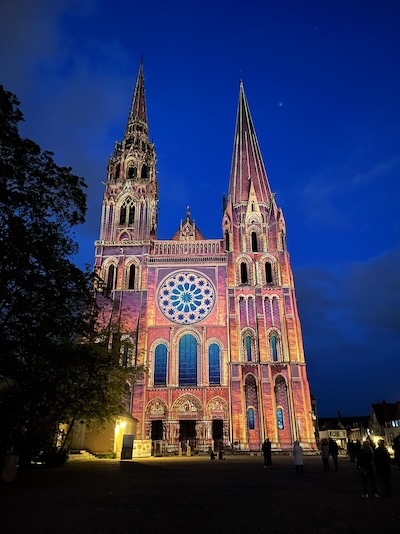 |
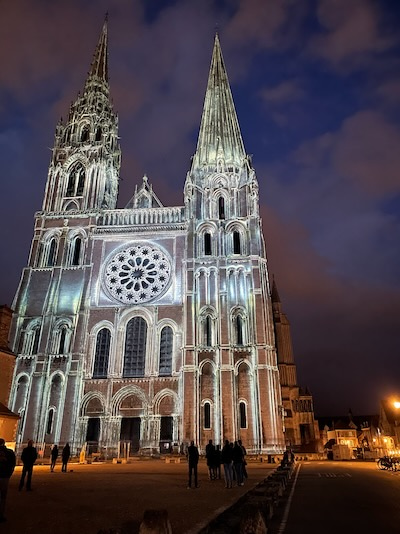 |
6. Henry IV was consecrated at Chartres
Chartres Cathedral history has deep roots.
Henri IV, one of France's favorite kings, was crowned at Chartres, not Reims.
So why the change?
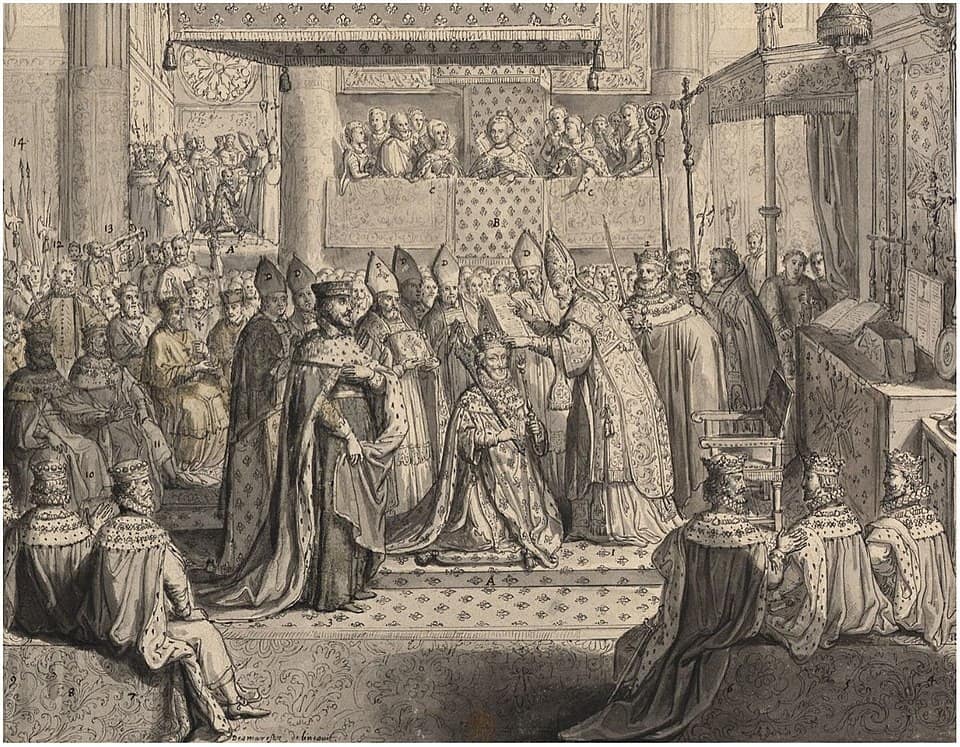 Consecration of king Henri IV at Chartres Cathedral. Desmaretz, Public domain, via Wikimedia Commons
Consecration of king Henri IV at Chartres Cathedral. Desmaretz, Public domain, via Wikimedia CommonsIn 1594, France was deep into the Wars of Religion, a lengthy and brutal conflict between Catholics and Protestants. Henri IV was born Protestant, but had seesawed between Protestantism and Catholicism throughout his life.
The city of Reims was at the time held by the Catholic League, which refused to recognize Henri IV - and wouldn't let him be crowned there, the first time a French king would not be consecrated at Reims since the 11th century.
Enter Chartres, accessible and loyal, not to mention home to the Sancta Camisia, the relic thought to be the tunic worn by the Virgin Mary at the birth of Jesus.
At a time of conflict, all this helped provide religious legitimacy and royal continuity. Still, the ceremony had a bit of an improvised air, without the usual pomp.
No matter: Henri would become one of France's most admired kings, ending the Wars of Religion, issuing an edict that protected Protestants from persecution, and slowly starting to knit French society together again.
7. The Sancta Camisia
Many visitors come to see the Sancta Camisia.
The garment was originally preserved by the Byzantine emperors and later presented as a gift, either by Emperor Constantine VI or Empress Irene, to Charlemagne. His grandson, Charles the Bald, donated it to Chartres Cathedral, making Chartres one of the most important Christian destinations in the Middle Ages.
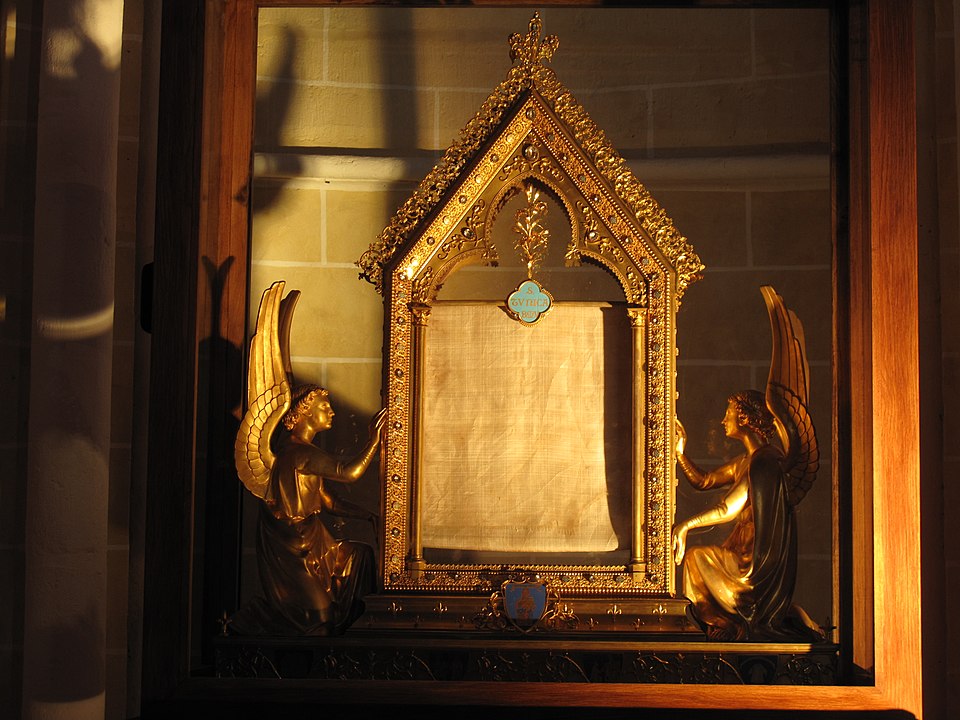 The Sancta Camisia, housed in a modern glass case behind the high altar in the apse of Chartres Cathedral
The Sancta Camisia, housed in a modern glass case behind the high altar in the apse of Chartres CathedralThe Sancta Camisia sits in a tall glass case behind the high altar. You won't be able to see the entire garment, as it appears folded, but this is certainly a piece of it.
8. The Black Madonna
During the French Revolution, churches were desecrated and often destroyed, their interiors looted and their walls defaced. Many were converted into secular spaces, often into what were called Temples de la Raison, or temples of reason.
Chartres was one of these. (I've documented the French Revolution's failed attempts to destroy Chartres in greater detail on Gallia Incognita, my Substack blog.)
As part of the Revolution, a much-venerated 12th-century statue of the so-called Black Madonna, the Vierge à l’Enfant de Notre-Dame-de-Sous-Terre, was dragged outside and burned on a bonfire. Fortunately, quick thinking and fleetfootedness on the part of a few reasonable men saved many of the Cathedral's other statues and sculptures, which you can admire today.
In fact, the Cathedral itself was largely left intact, as opposed to many of the city's other churches.
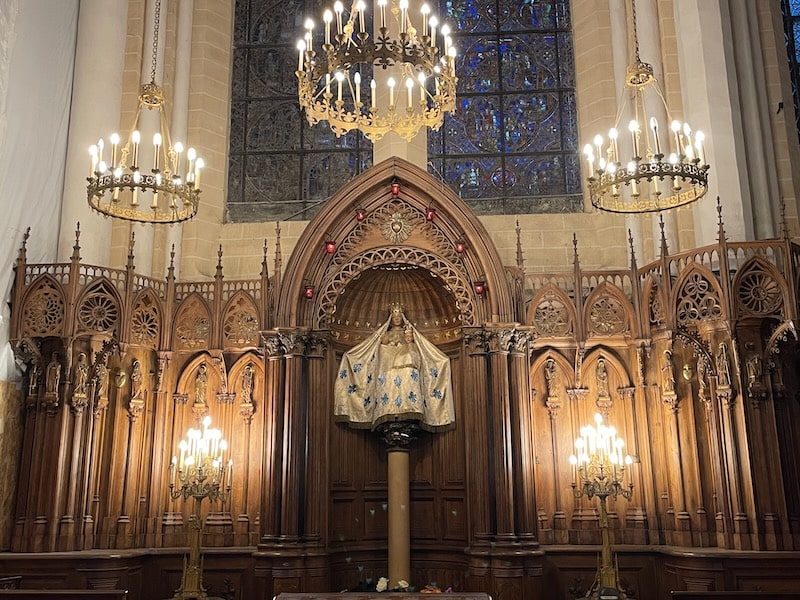 Replica of "Black Virgin" in Chartres Cathedral ©OffbeatFrance
Replica of "Black Virgin" in Chartres Cathedral ©OffbeatFranceThe statue of the Black Madonna was highly venerated and drew thousands of pilgrims each year for its purported miracles.
Since no image of the statue exists, one had to be manufactured: it is believed to have been made of wood, darkened by soot or incense, with Mary seated with the infant Jesus on her lap.
9. The Chartres Cathedral crypt and treasures
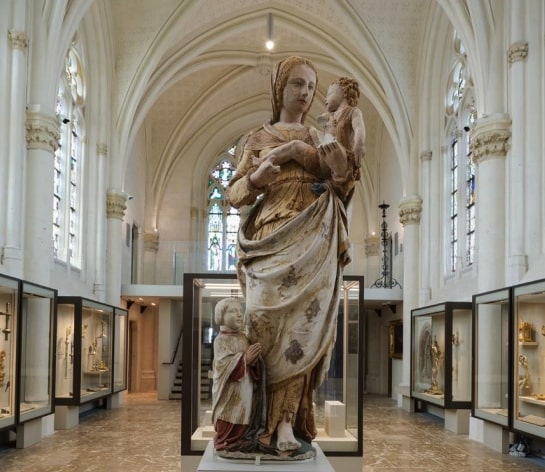 Treasure of Chartres Cathedral ©DRAC CVdL François Lauginie
Treasure of Chartres Cathedral ©DRAC CVdL François LauginieAfter more than two decades behind closed doors, the treasure of Chartres Cathedral reopened to the public in 2024, just in time for the millennium celebration of the Cathedral’s crypt, but sadly, too late for me to see them.
The fabulous thing about the treasury is that it displays nearly 150 exceptional objects, some never before shown in Chartres, all against the backdrop of the freshly restored 14th-century Saint-Piat Chapel.
Highlights include a rare 13th-century tabernacle with scenes of the Crucifixion and Pentecost, a royal child’s armor believed to belong to the future Charles VI, astonishing wampum necklaces offered by Huron and Abenaki converts from 17th-century Canada, and six towering 12th-century statues removed from the Royal Portal, all of which I plan to examine closely on my next visit.
Before you go…
Chartres Cathedral is easy to reach, only an hour by train from Paris (Gare Montparnasse) and a little longer by car via the A10 and A11.
And while the Chartres Cathedral labyrinth and its interior are amazing, there's plenty more to see in town, from the cobbled streets and artisan shops to the quirky Maison Picassiette, a house covered entirely in mosaics.
For the best view of the Cathedral, stay at Le Boeuf Couronné, a few minutes' walk from the Cathedral (ask for a room with a cathedral view).
For a meal, I enjoyed both Le Parvis and Esprit Gourmand, both just steps from the Cathedral.
And if you have a car and a bit more time, consider visiting other sites in the Eure-et-Loir département, including the historic Château de Maintenon or the romantic ruins of Château d'Anet, where Diane de Poitiers, mistress of Henri II, once lived.
Did you enjoy this article? I'd love if you shared it!

